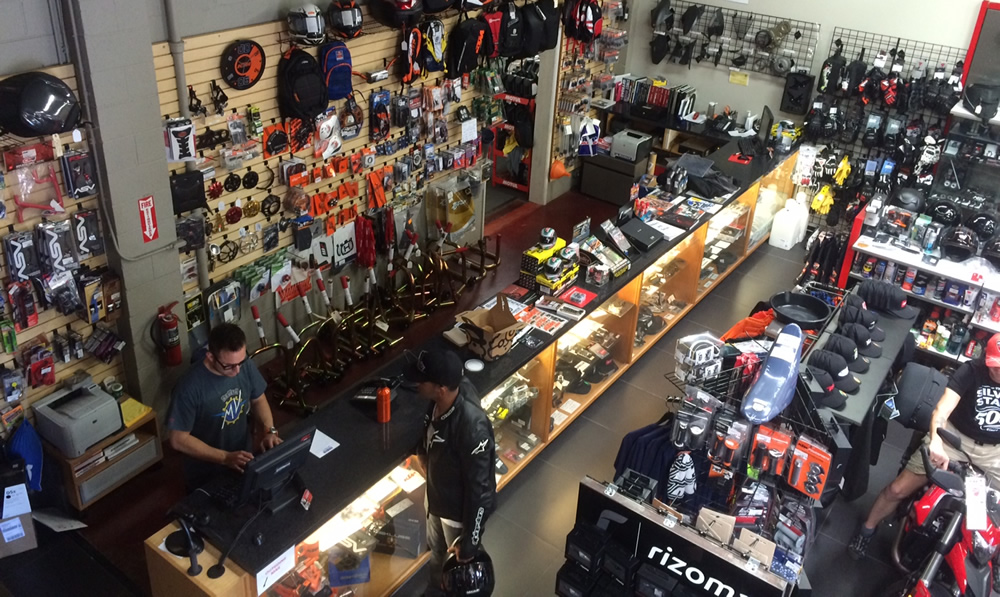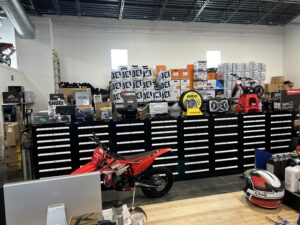Discover Quality Moto Parts NZ for All Your Motorcycle Demands
Discover Quality Moto Parts NZ for All Your Motorcycle Demands
Blog Article
Understanding the Necessary Parts of a Motorcycle: A Comprehensive Overview for Lovers
For motorbike lovers aiming to elevate their riding experience and ensure their bikes run smoothly, comprehending the necessary components of a motorcycle is vital. Each aspect, from the engine's elaborate operations to the essential role of the stopping systems, not just impacts performance yet likewise safety and comfort. This guide will walk through the basic components that every cyclist ought to be familiar with, enabling informed selections in both upkeep and prospective upgrades. As we start this exploration, one must ask: exactly how does each part engage to develop the smooth adventure every fanatic looks for?
Engine Elements

The camshaft plays an essential function in regulating the timing of the engine's valves, guaranteeing the precise opening and closing required for efficient fuel and air intake, along with exhaust expulsion. This timing is crucial to preserving optimal engine performance and effectiveness. Additionally, the carburetor or gas injection system, depending upon the motorbike version, is in charge of blending air with gas in the right proportion for burning.
The air conditioning system, either air or liquid-based, functions to maintain the engine's temperature level within operational limitations, protecting against overheating and making sure longevity - motorcycle shop. Each part, meticulously created and incorporated, adds to the smooth procedure of the engine, defining the motorbike's power output and overall efficiency
Transmission System
Indispensable to the bike's functionality, the transmission system guarantees effective power transfer from the engine to the wheels. This system comprises several critical parts, including the clutch, transmission, and final drive, each playing an important duty in translating the engine's power into motion. The clutch, typically operated by a hand bar, serves to disengage the engine and involve from the transmission, enabling smooth gear modifications and regulated acceleration.
The gearbox, typically described as the transmission appropriate, contains a collection of gears that riders can by hand shift via to adjust the bike's speed and torque output. These equipments are arranged in a series that enables the motorcycle to increase smoothly and preserve ideal engine performance throughout various speeds. Most motorbikes utilize a sequential transmission, needing the cyclist to move equipments in a predetermined order.
Braking Devices
While understanding the transmission system is key to taking advantage of a motorbike's power, just as important is the capacity to manage and stop that power effectively, which is where braking devices enter play. Brakes are important for safety and efficiency, providing the cyclist with the needed control to navigate various terrains and problems. Usually, motorcycles include two sorts of braking systems: disc brakes and drum brakes.
Disc brakes are a lot more common in modern motorbikes due to their premium efficiency. This system provides much better warm dissipation, regular efficiency, and enhanced stopping power, particularly in damp problems.
Alternatively, drum brakes, though much less common, are still found in some motorbikes. They function by pressing brake footwear versus the inner surface of a drum affixed to the wheel. While usually less effective in heat dissipation and stopping power, drum brakes are simpler and much more economical.
Recognizing these stopping systems' subtleties enables motorcyclists to keep their bikes effectively and value the design that makes certain reliable and risk-free stopping.
Suspension and Steering
Suspension and steering systems are vital components that browse this site considerably influence a motorcycle's handling and ride convenience. The shock absorber, containing forks at the front and shock absorbers at the back, takes in road abnormalities, boosting security and control. Front forks, generally telescopic or inverted, compress and rebound to minimize influences, while back shock absorbers preserve tire contact with the road, crucial for traction and safety.
Steering, focused around the handlebars, attaches the motorcyclist to the motorbike's directional control. The steering head bearings make certain smooth procedure, enabling accurate maneuverability. Correct positioning and maintenance of these bearings are crucial for foreseeable steering feedback and minimizing biker fatigue.
The suspension's adjustability is an additional essential element; preload, damping, and rebound settings permit customization to match different riding designs and conditions. This flexibility is necessary for optimizing efficiency, whether navigating metropolitan roads or dealing with sturdy tracks. Technologies like electronic shock absorber provide real-time changes, improving adventure quality throughout diverse terrains.

Electric Systems
After making sure a smooth and regulated adventure through effective suspension and guiding systems, attention turns to the electric systems, a critical element of modern-day motorcycles. These systems play a critical role not only in starting the engine yet additionally in powering different elements that boost the functionality and security of the motorbike.
At the heart of a bike's electrical system is the battery, which stores electrical energy essential for beginning the engine and powering auxiliary systems - motorbike shop. The generator or generator, coupled with the rectifier-regulator, guarantees the battery stays charged while the motorbike is in procedure, transforming power into electrical energy and maintaining voltage levels
The ignition system, another vital component, is in charge of stiring up the air-fuel combination in the engine's cylinders. Modern motorbikes often make use of an electronic ignition system, supplying better efficiency and integrity contrasted to standard systems.
Illumination systems, consisting of headlights, tail lights, and indications, are also vital, guaranteeing visibility and safety and security for the biker. Extra electronic elements such as sensing units, control devices, and shows add to sophisticated functions like fuel shot monitoring, anti-lock braking systems (ABS), and electronic control panels, even more boosting the riding experience.
Verdict
A detailed comprehension of a bike's necessary components, consisting of the engine, transmission system, braking systems, suspension, steering, and electric systems, click for more info is indispensable for lovers aiming to enhance safety and security, comfort, and efficiency. Mastery of these elements enables notified choices regarding upkeep and upgrades, eventually enhancing the riding experience. By integrating this expertise, motorcyclists can ensure their bikes operate at peak performance and dependability, rain helmet thereby making the most of both satisfaction and durability of their automobiles.
For bike lovers looking to elevate their riding experience and ensure their bikes run smoothly, recognizing the necessary components of a motorbike is critical.Important to the motorcycle's functionality, the transmission system makes certain effective power transfer from the engine to the wheels.While understanding the transmission system is key to harnessing a bike's power, equally essential is the capability to manage and stop that power efficiently, which is where braking systems come into play. Normally, motorbikes feature two types of braking systems: disc brakes and drum brakes.
A complete understanding of a bike's important elements, including the engine, transmission system, stopping systems, suspension, guiding, and electrical systems, is important for fanatics intending to maximize performance, convenience, and safety and security.
Report this page